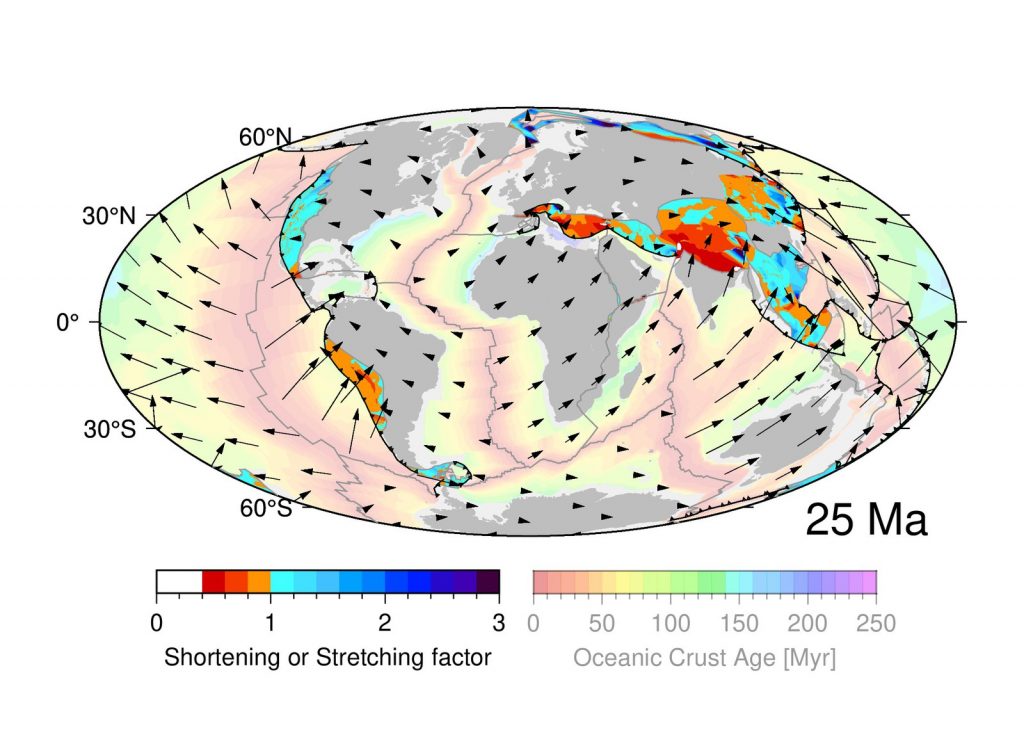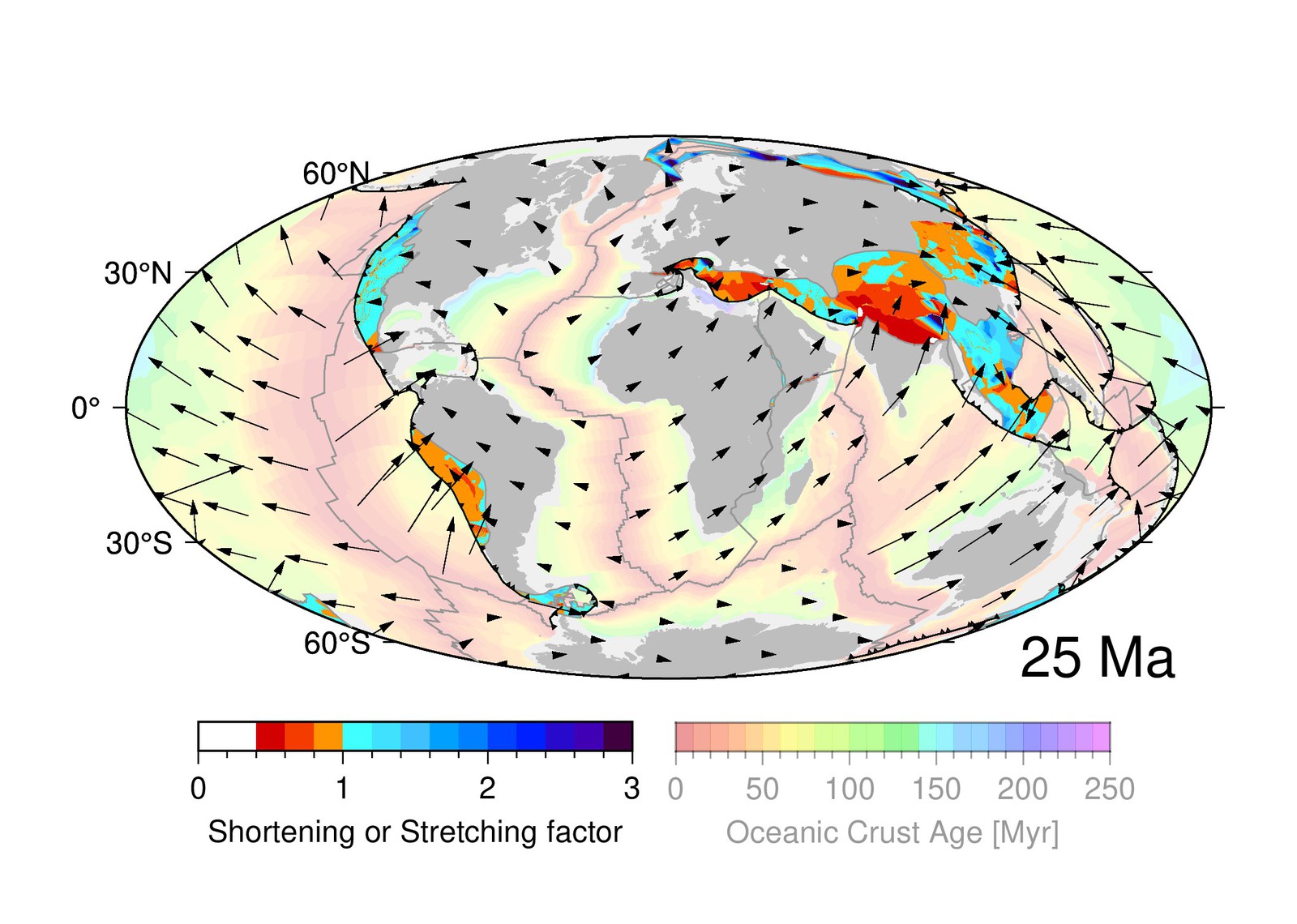A Global Plate Model Including Lithospheric Deformation Along Major Rifts and Orogens Since the Triassic
R. Dietmar Müller, Sabin Zahirovic, Simon E. Williams, John Cannon, Maria Seton, Dan J. Bower, Michael G. Tetley, Christian Heine, Eline Le Breton, Shaofeng Liu, Samuel H. J. Russell, Ting Yang, Jonathon Leonard, and Michael Gurnis
Journal: Tectonics (open access)
Global deep‐time plate motion models have traditionally followed a classical rigid plate approach, even though plate deformation is known to be significant. Here we present a global Mesozoic–Cenozoic deforming plate motion model that captures the progressive extension of all continental margins since the initiation of rifting within Pangea at ~240 Ma. The model also includes major failed continental rifts and compressional deformation along collision zones. The outlines and timing of regional deformation episodes are reconstructed from a wealth of published regional tectonic models and associated geological and geophysical data. We reconstruct absolute plate motions in a mantle reference frame with a joint global inversion using hot spot tracks for the last 80 million years and minimizing global trench migration velocities and net lithospheric rotation. In our optimized model, net rotation is consistently below 0.2°/Myr, and trench migration scatter is substantially reduced. Distributed plate deformation reaches a Mesozoic peak of 30 × 106 km2 in the Late Jurassic (~160–155 Ma), driven by a vast network of rift systems. After a mid‐Cretaceous drop in deformation, it reaches a high of 48 x 106 km2 in the Late Eocene (~35 Ma), driven by the progressive growth of plate collisions and the formation of new rift systems. About a third of the continental crustal area has been deformed since 240 Ma, partitioned roughly into 65% extension and 35% compression. This community plate model provides a framework for building detailed regional deforming plate networks and form a constraint for models of basin evolution and the plate‐mantle system.

Plate motion model (GPlates) files, seafloor age-grids, active and total stretching factor grids, and animations are available from this link.
The open-access paper can be retrieved from here.
UPDATE: A major update including many bug fixes to this model is described here.
Citation:
Müller, R. D., Zahirovic, S., Williams, S. E., Cannon, J., Seton, M., Bower, D. J., Tetley, M. G., Heine, C., Le Breton, E., Liu, S., Russell, S. H. J., Yang, T., Leonard, J., and Gurnis, M. (2019), A global plate model including lithospheric deformation along major rifts and orogens since the Triassic. Tectonics, vol. 38, https://doi.org/10.1029/2018TC005462.
Müller, R. D., Zahirovic, S., Williams, S. E., Cannon, J., Seton, M., Bower, D. J., Tetley, M. G., Heine, C., Le Breton, E., Liu, S., Russell, S. H. J., Yang, T., Leonard, J., and Gurnis, M. (2019), A global plate model including lithospheric deformation along major rifts and orogens since the Triassic. Tectonics, vol. 38, https://doi.org/10.1029/2018TC005462.
![]()

